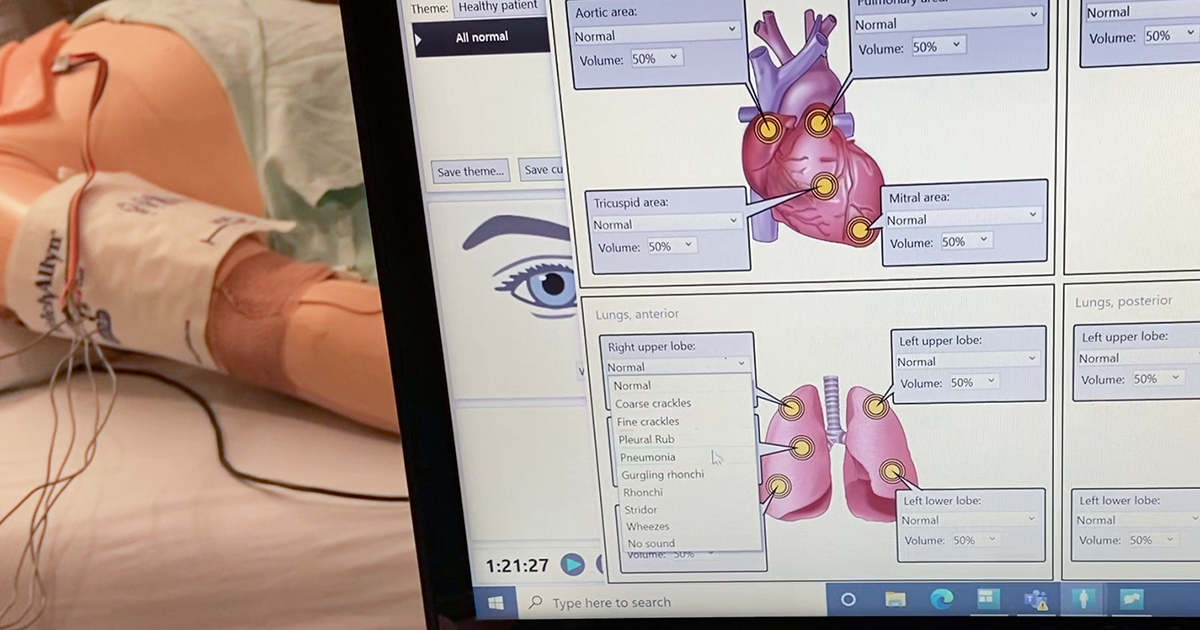
Whether a patient is at home or in the hospital, clinicians may use remote medical devices to monitor heart function, blood pressure and pulse oximetry. The goal is to detect changes or trends in these vital signs over an extended period of time without needing a provider at the patient’s bedside.
However, there isn’t a reliable method to continuously observe lung activity in the same way, meaning sudden abnormalities can go undetected. This gap in monitoring devices was highlighted during the height of COVID-19 when it was more important than ever to know how well a patient’s lungs were functioning at all times.
This led pediatric hospitalist and Children’s Innovation Lab leader, Dr. Adam Cross, to propose the idea for a Pulmonary Acoustic Sensor Telemetry Array, also called PASTA. The device will have wearable adhesive pulmonary acoustic sensors to constantly monitor lung function while also classifying sounds that can indicate respiratory changes.
So far, two senior design teams have worked on a prototype, Caterpillar is partnering to help improve on the concept and Dr. Cross, who is also an assistant professor at the University of Illinois College of Medicine Peoria, has been invited to present his project idea at regional and national conferences. He most recently received a grant from the Jump Applied Research for Community Health through Engineering and Simulation (ARCHES) program to continue this project.
This funding will aid in the development of a machine-learning algorithm to process and analyze continuously monitored lung sounds to support clinical decision-making.
How the grant will help
Dr. Cross’s team has developed an initial prototype for PASTA that includes sound sensors that will record, process and export lung sounds into a central signal processing device. The device is small and can transmit data wirelessly, allowing easy access for clinicians and giving pediatric patients the ability to move around freely.
“Caterpillar will help us take this prototype to the next level,” said. Dr. Cross. “They are in the process of scheduling a hackathon where members of their design labs will incorporate their own ideas and get us closer to a functional prototype. I think that will be a lot of fun.”
The next step is to develop an algorithm that uses lung sounds to identify when a patient is breathing in, breathing out or at rest when background noise is present.
“Numerous models have been successful at automating the diagnosis of pneumonia and other lung pathologies, but none have had the ability to identify breathing phases purely from acoustic data,” Dr. Cross said. “If we succeed, we would have a foundational model for more advanced breathing analysis, leading to earlier detection of disease progression in children.”
Dr. Cross, in partnership with researchers and students at the University of Illinois Urbana-Champaign, will manually label lung audio recordings from thousands of patients. They will then use that data to train the machine learning model. Once this work is complete, the lung sounds recorded through PASTA would be fed into the machine learning algorithm to support a diagnosis.
Partner with us
This is just one of the many projects the Children’s Innovation Lab is working on. Another includes building a machine-learning model to predict the likelihood of a COVID-19 positive child needing hospitalization. Dr. Cross and his team are also creating a natural language processing model and a relational database that could help physicians identify rare diseases in children.
If you are interested in learning more about the Children’s Innovation Lab, participating in certain aspects of the journey or if you’d like to invest or partner, contact us today.






